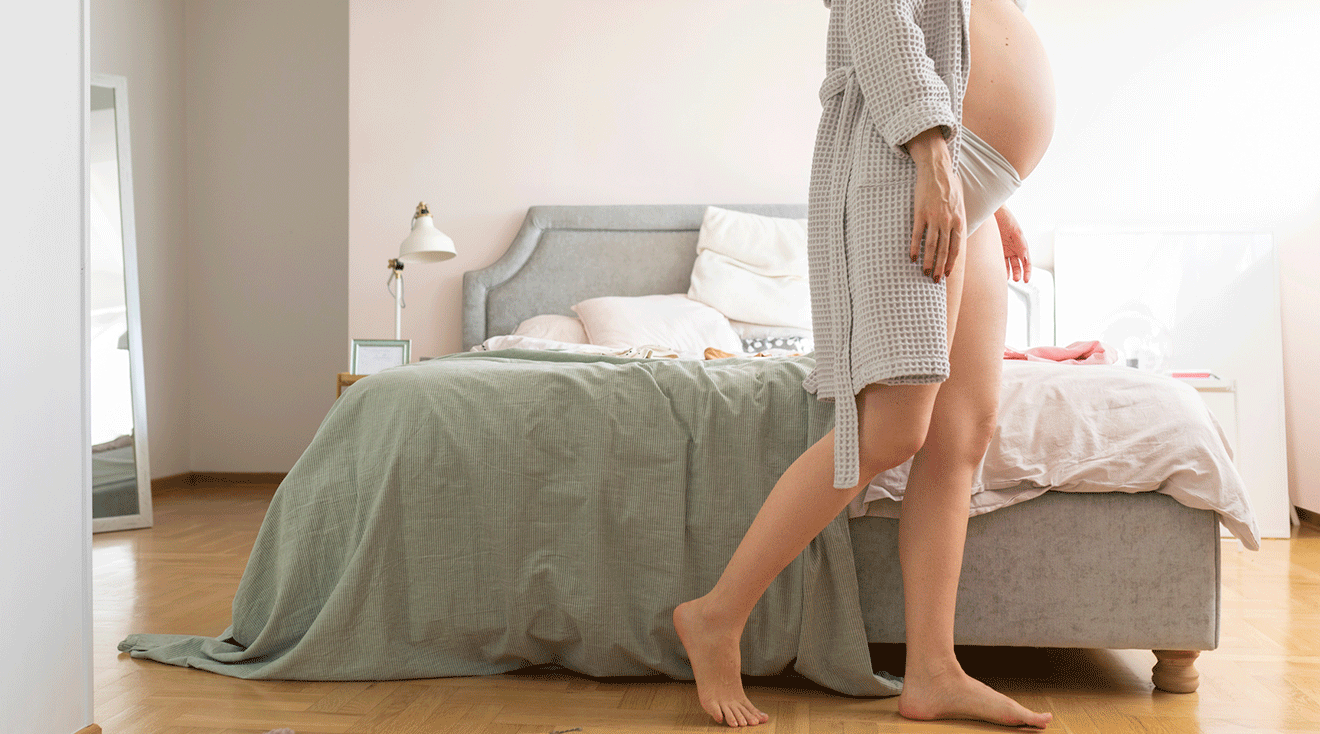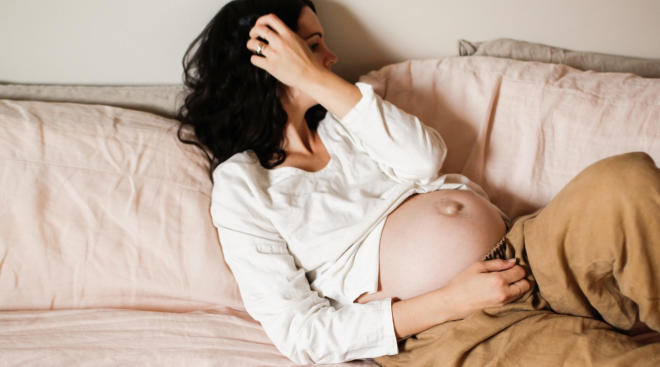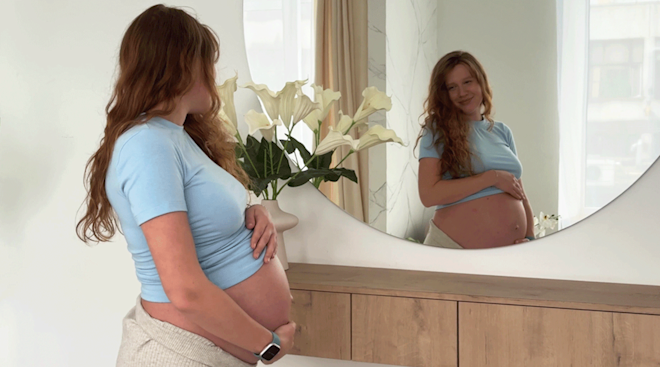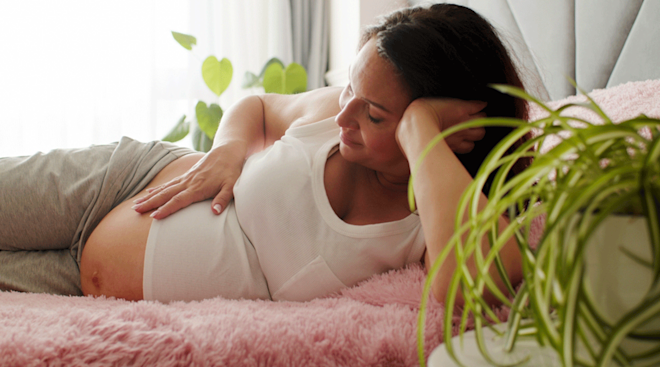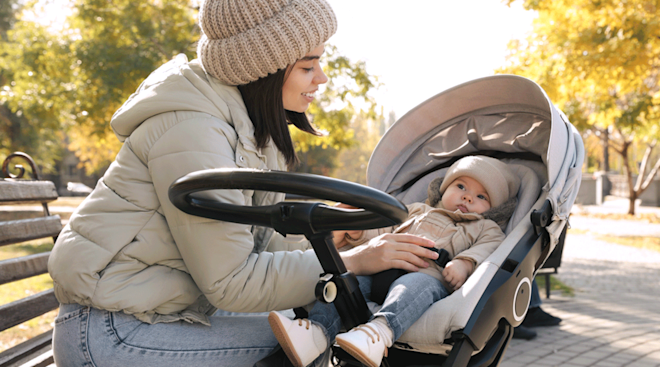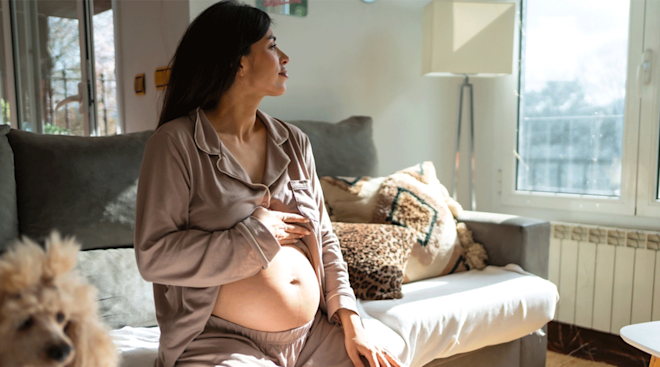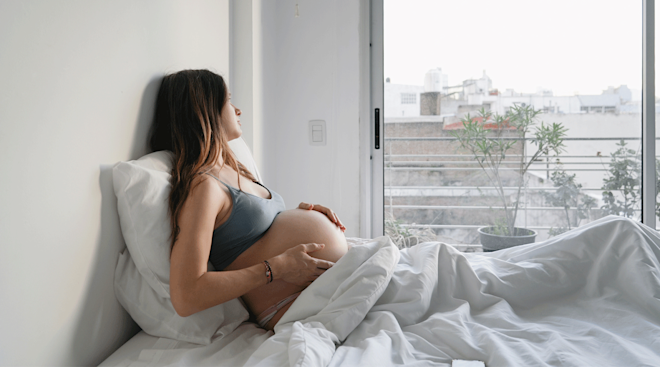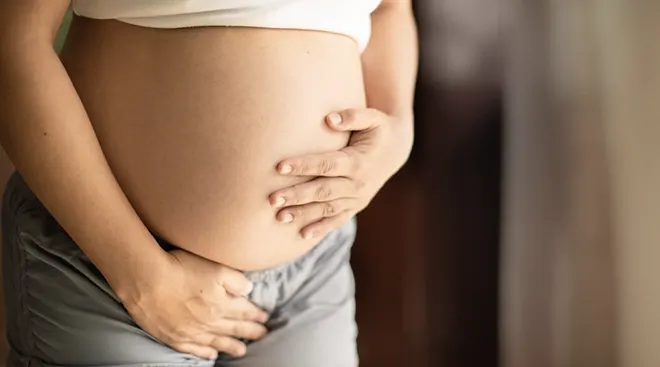What’s the Deal With the Pregnant Waddle?
Sure, the extra weight, a big bump and extreme tiredness have been slowing you down for a while. But now—on top of all that—you’re also dealing with the signature pregnant waddle!
If you’re moving a little slower and more side-to-side lately, there’s no need to worry. Most pregnant people gain the infamous “pregnant waddle” at some point. And, believe it or not, this symptom actually has a purpose: to help you prepare for birth. But that’s not all—some research suggests that waddling during pregnancy is a protective mechanism that helps prevent spills, fall and balance issues.
Of course, it might not feel like the sexiest strut right now—but, we promise, you look adorable waddling with that bump of yours! In the meantime, read on to get the full gist, from when pregnancy waddle starts to what you can do about it!
When a pregnant person starts walking with a wider stance and adapts a side-to-side swaying motion with their steps, it’s sometimes called the pregnant waddle–or waddling gait. It sort of resembles how a duck moves.
“While not all pregnant people waddle, most do! All bodies and pregnancies are different, causing some individuals to waddle more and others to not waddle at all,” says Melissa Dennis, MD, MHA, FACOG, an ob-gyn in Chicago and chief medical officer at Partum Health. All waddling aside, it’s actually a safe way for our bodies to adjust to the physical changes that come with pregnancy.
The main culprit is a hormone called relaxin. This reproductive-specific hormone has one main job: relaxing your ligaments and muscles to make them more flexible, as explained by Cleveland Clinic. This is important in pregnancy. When joints are loose, the pelvis widens, baby drops down and an expecting mom’s center of gravity shifts forward–all in preparation for birth. These steps combined can cause a massive change in the way pregnant people walk, notes Kelli Daugherty, APRN, CNM, a board-certified nurse midwife at OSF HealthCare in Illinois.
Just like everyone is unique, every pregnancy is too. You can gain a waddle at any point when pregnant—or maybe not at all. But many experts find that the pregnancy waddle commonly starts toward the end of the second trimester or the third trimester. “This is due to peak levels of relaxin and downward pressure on the pelvic floor from the growing uterus,” Dennis adds. Luckily, the waddle usually goes away shortly after delivery.
First, remember that waddling is a very normal part of pregnancy–it’s the body’s natural response to added weight and loose pelvic ligaments. But that doesn’t mean it can’t cause any issues or make you feel uncomfortable. “Waddling too much can potentially increase pelvic girdle pain and round ligament pain by further stretching out these already loosened muscles and ligaments,” points out Daugherty. It can also worsen sciatica pain from the extra pressure pushing on the sciatic nerve.
Luckily, Dennis and Daugherty note that there are some things you can try to lessen the disruption and discomfort of a pregnancy waddle. These include:
- Low-impact exercises
- Swimming
- Stretching
- Wearing a maternity support belt
- Working with a physical therapist
In the meantime, the best thing you can do is chat with your provider about your symptoms.
Waddling in late pregnancy doesn’t necessarily mean labor is around the corner (I can tell you that from my own long, impatient experience!). That said, sudden waddling could indicate that baby has dropped lower into the pelvis, causing more pressure and widening. “It means the body is preparing, but the exact timing for labor is still anyone’s best guess,” says Dennis.
Ready for the verdict? Your body is gearing up for the big day, waddling included. That new side-to-side swaying motion you gained happened for an important reason–your pelvic ligaments and muscles are relaxing and making way for baby. It’s a totally normal and natural phase, and most pregnant women will go through this. If it bothers you, talk to your provider. Either way, rest assured that you’ll likely lose your waddle shortly after delivery.
Please note: The Bump and the materials and information it contains are not intended to, and do not constitute, medical or other health advice or diagnosis and should not be used as such. You should always consult with a qualified physician or health professional about your specific circumstances.
Plus, more from The Bump:
Kelli Daugherty, APRN, CNM, is a board-certified nurse midwife at OSF HealthCare in Illinois. She earned her degree from Frontier Nursing University in 2016 and specializes in pregnancy and women's health care.
Melissa Dennis, MD, MHA, FACOG, is an ob-gyn in Chicago and chief medical officer for Partum Health. She received her medical degree from the University of Missouri-Kansas City School of Medicine.
Gait & Posture, The role of waddling gait in balance control during pregnancy, February 2025
Learn how we ensure the accuracy of our content through our editorial and medical review process.
Navigate forward to interact with the calendar and select a date. Press the question mark key to get the keyboard shortcuts for changing dates.

































